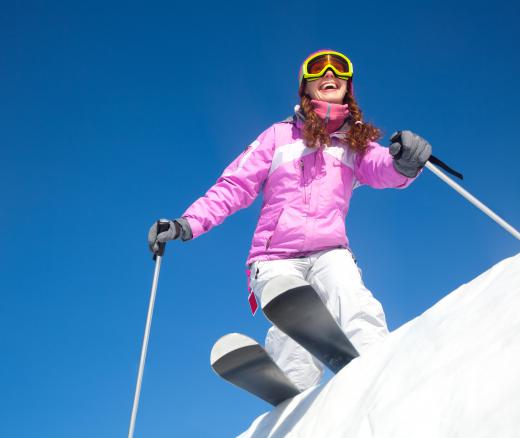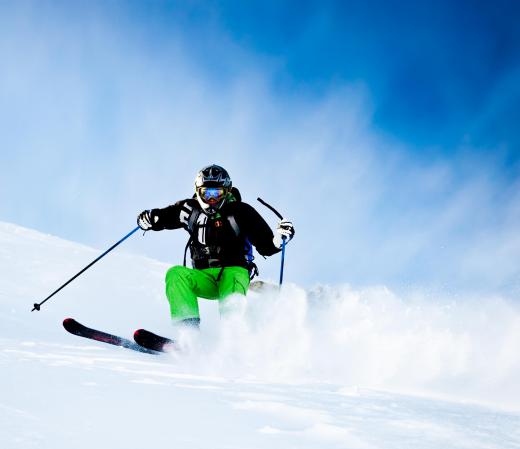At Sports&Hobbies, we're committed to delivering accurate, trustworthy information. Our expert-authored content is rigorously fact-checked and sourced from credible authorities. Discover how we uphold the highest standards in providing you with reliable knowledge.
What is Ski Carving?
Ski carving is when a skier makes a turn on the edge of the skis. Ski carving is difficult to do correctly. Many people think they are carving when they actually are skidding, which causes the ski to slide sideways in the snow and to lose speed. Ski carving, on the other hand, allows the skier to lose very little speed while turning.
Making a Turn

A skier executes a carve turn by shifting his or her weight in the direction of the turn. This puts pressure on only the inner edges of the skis. The outer edges of the skis are lifted off the snow or are merely making light contact with the soft, powdery snow that is on top of the hard-packed snow.
When skiing downhill, an experienced skier typically will execute a series of carve turns, one after the other. Ski carving to the left and then to the right, then repeating the turns again and again, will result in smooth S-shaped patterns in the snow. Skidding turns will create a more jagged pattern because more snow is displaced as the ski skids.
How Skis Turn

Ski carving is possible because of the way skis are designed. Their width is greater at the ends than in the middle. When the skier shifts his or her weight toward one edge, the ski bends slightly in the direction of that edge so that the wider ends and narrower middle will remain in contact with the snow. This bend is what causes the ski to turn as it rolls onto its edge. Skiers who need to make bigger turns therefore need skis that are wider at the ends, because they bend more when they are rolled onto their edges.
Learning the Techniques
To learn the proper techniques for ski carving, beginners should practice on ground that is mostly flat or has only a slightly incline. This will allow the skier to practice at much slower speeds before attempting to make carve turns on a steeper hill. The skier's knees should remain bent, and his or her upper body should remain mostly upright while he or she transfers his or her weight from side to side. At first, the skier might feel as though he or she is about to fall over, but that can be overcome with practice — after a few falls, most likely.
More pressure usually is applied to the outside ski when ski carving. For example, when the skier turns left, he or she will feel more weight applied to his or her right ski. Experienced skiers, however, are able to put more pressure on the inside ski when the snow conditions are right.
To increase speed when ski carving, the skier should guide his or her turns using the thighs instead of the feet. The thighs provide more power and allow for more speed. For shorter turns, however, the feet also must be used to make the turns.
AS FEATURED ON:
AS FEATURED ON:












Discuss this Article
Post your comments